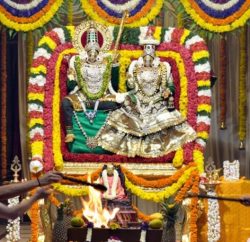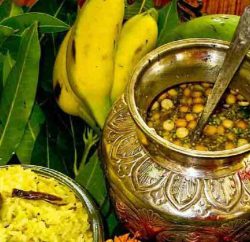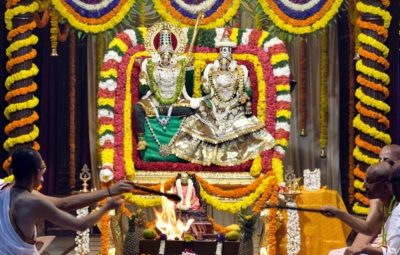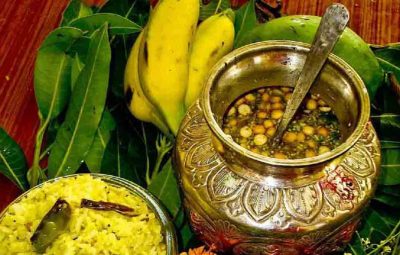Here is an excellent guide to your visit to the Jagannath temple, with all the useful information about this historical temple.
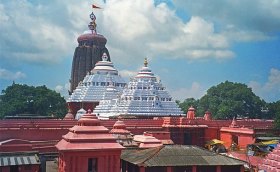
The Jagannath Puri temple is built on a gigantic raised platform in the heart of the city. The temple complex is bounded by a wall about seven meters high; this includes the height of the platform. The surface area of this platform is over 420,000 sq. ft. This enclosure has 4 gates, facing the 4 directions. On the east-facing gate, there are stone images of 2 lions and it is called the Lion Gate. The north, south and west facing gates are called the Elephant Gate, Horse Gate and the Tiger Gate respectively. The Lion Gate is mainly meant for the Lord Himself in as much as, the logs of wood out of which the Deities are made of make their entry into the temple when the Nava-kalevera ceremony takes place. There are pyramidal erections over the four gates.
As we arrive at the vast open area in front of the Lion Gate, we see a ten meter tall monolithic pillar known as Aruna Stambha. According to scriptures, Aruna is the charioteer of the Sun-god. The world renowned Konark temple (also called Sun temple) was designed in the form of a breathtaking chariot and this pillar with the beautifully carved Aruna sitting on its top was installed right in front of the temple’s porch. When the temple was forsaken and there was no presiding deity in it, this pillar was removed from Konark and was fixed in front of Jagannath temple in Puri where we see it now.
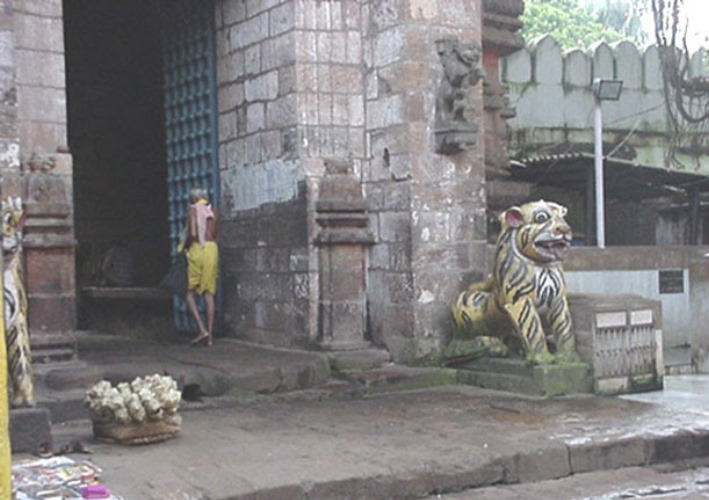
Immediately after we get into the main gate and go forward, we find a flight of steps. They are locally called Baisi Pahaca, literally meaning 22 steps. The history of this flight of steps has not been revealed. Great reverence is shown to this flight of 22 steps. Parents bring their kids and make them roll over the steps from top to bottom in anticipation of spiritual bliss and devotees also walk on the steps which are believed to throb with spiritual vibrancy.

As we cross the main entrance and ascend the flight of steps to the main temple, we find to our left, the huge kitchen area of the temple. Some tourists comment that due to this kitchen, the Puri temple can be termed as the biggest hotel in the world. The kitchen can feed even one lakh people with only 2-3 hours’ notice. The process of preparation is hygienic and the traditional method of preparation of food for so many people in so short a time, surprises many people. To the right, within the enclosure is the market where prasadam is sold and it is popularly called Ananda Bazar. Ananda Bazar literally translates as pleasure market. At the end of the stairs, we have to cross another gate that enters a second compound wall and then we have to turn left to go towards the Ganesh temple. There are attractive carvings on the sides of this entrance of the inner compound wall.
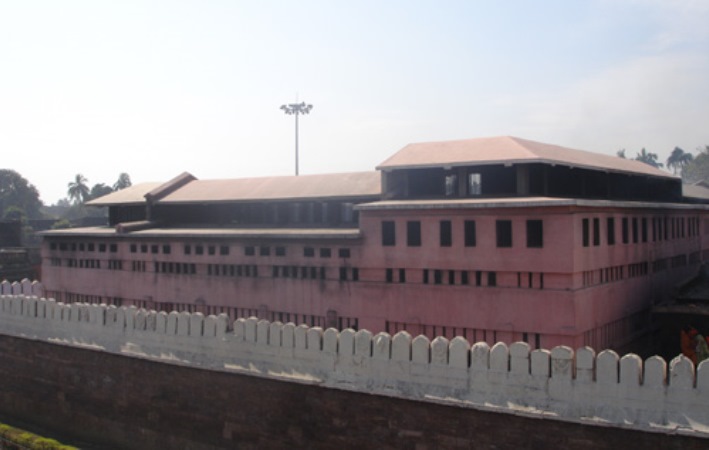
As we cross the gate, we can see immediately in front of us, the first section of the Jagannath temple which is called Bhoga Mandapa (Refectory). The other sections that are located to its west alongside are – Mukhasala, Nata Mandira and Bada Deula. On the tiled surface of the enormous Bhoga Mandapa, there are several sculptures that portray stories from the scriptures and they are very much appreciated by art-critics and pilgrims. There are about 30 temples around the main temple and to follow a time-honored practice; a devotee has to circumambulate the main temple. If one wants to see the main temple quickly, he has to visit at least three of the most important temples before coming to see Lord Jagannath. The 3 main shrines are (i) Vimala temple (ii) Ganesh temple at the foot of the Kalpavata (a very old banyan tree) and (iii) Lakshmi temple.

The Kalpavata is an ancient banyan tree believed to be present here since the installation of Jagannath. In the scriptures, there is a narrative of a heavenly tree known as Kalpavata, believed to fulfill the desires of people seeking mercy.
Devotees stand at the foot of the tree for a minute or so to convey their desire in mute voice to the Kalpavata. At the foot of this tree, is the Ganesh temple. Ganesh is the one who destroys all obstacles. The mouse (the vehicle of Ganesh) mounted in front of the deity is an interesting object. Millions of palms have passed over it is as nearly every pilgrim touches it, but the hair like thorny projections present on its body have not become blunt even to this day.
From here, as we proceed towards the Vimala temple, to our left there is a raised platform with a roof. It is the famed Muktimandapa, the seat for the most learned scholars of Odisha, honored by the kings of the State in a traditional manner. On important debatable issues related to the rituals of the temple, references are made to this association of priests for a final decision. The Vimala temple is one of the most important centers of Shakti worship in India. The 16 days Durga Puja takes place here every year. This temple plays a significant role in giving special spiritual sanctity to the food offered to Lord Jagannath. The food is referred to simply as Prasadam when it is offered to Jagannath, but after some religious rites are performed in the Vimala temple, this very Prasadam turns into Mahaprasadam.
After this, we visit the Lakshmi temple. On our way to this temple, to our left is a small model of the sanctum of the main temple. This is believed to be the model after which the main temple was constructed. We will also see the temple of Sarasvati and Bhubaneshvari to the left. Finally, when we enter into the sanctum of the Lakshmi temple, we see by the left side of the door-way, an image of Narasimha with Shankaracharya standing at the feet of the Lord with his danda (stick which is held by the mendicants of the Shankara order). It is believed that the Sankata Nasana Lakshmi-Narasimha stotra was written here by Shankara when he was in Puri. Lakshmi is the female counter-part of Jagannath. From the Lakshmi temple, we are to proceed towards the main temple and enter into the Nata Mandira through its north-facing entrance. As we start from the Lakshmi temple towards it, we shall visit the Suryanarayana Mandira, where there is a misshapen image placed behind the presiding deity in the sanctum sanctorum. It is believed that this was the image of the Sun-god that was worshipped in the main temple at Konark, which was shifted to this place before that temple partly collapsed.
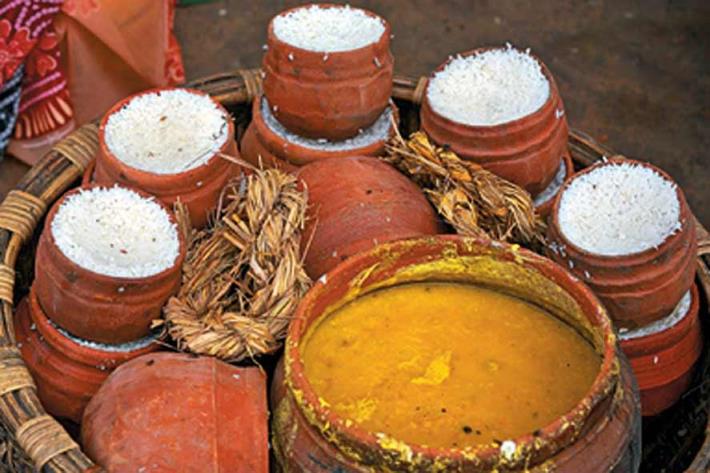
Upon entering the Nata Mandira, we have to stand behind a monolithic pillar, about ten feet high, on top of which there is an image of Garuda, the mount of Vishnu. Usually, visitors touch the pillar with both their hands and through centuries of such touching, the centre portion of the pillar has become thinner. The Nata Mandira is a huge hall decorated with paintings and models of the popular characters of the Puranas, about the pastimes of Vishnu and Krishna. Chaitanya Mahaprabhu would stand next to the Garuda-stambha, the pillar holding Garuda. It is said that Lord Chaitanya felt such intense ecstasy upon seeing the Jagannath Deity that His feet melted impressions into the stone floor and of His fingers upon the pillar. The impressions were caused as the stones melted by the transcendental touch of the Lord as He took darshana of Lord Jagannath in sublime ecstasy. From here, we proceed to the Mukhasala or the veranda. The carvings on either side of the door-frame are made of stone as in the Konark temple. From the veranda, we move towards the sanctum sanctorum. When some rituals are in progress, we are asked to have darshan of the Deities from the veranda itself and not to ask for admittance into the sanctum during that period. At other times, we are permitted to enter the sanctum, have darshan and also allowed to circumambulate the Deities through a narrow passage behind the elevated platform called Ratnavedi, on which the Deities are placed. Lastly, on exiting the temple, we come to the Ananda Bazar where you will find people busy purchasing the Mahaprasadam.
Adjacent to the Ananda Bazar is the Snana Vedi which is located in the north-eastern corner. The dais is about 30 feet high from the ground and the bathing ritual of the wooden Deities takes place here. After this, we come to the Baisi Pahaca for the final exit. There are about 30 temples within the Puri temple enclosure.

Situated inside Lord Jagannath Temple and in front of Vimala Temple is the Rohini Kunda. The water of this kunda is known as Karana water and is sprinkled on devotees for purification. Behind this is an image of Kakabhusandi (a crow). Legend has it that Bhusanda fell into this kunda and got transformed to a form of Vishnu with four hands holding a conch, wheel, lotus and mace.
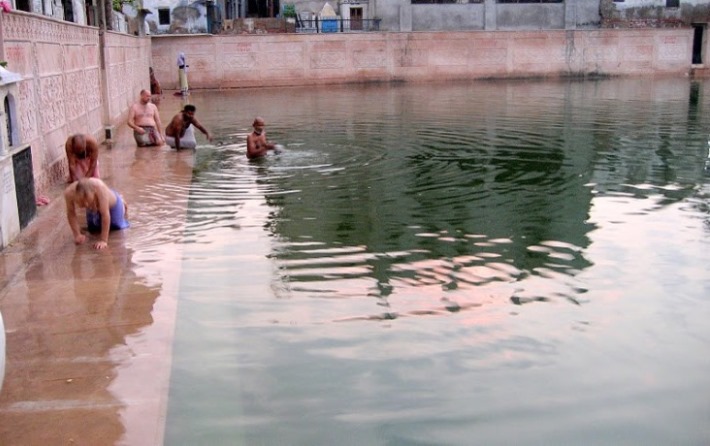
The following is a list of the other temples in the enclosure (three main temples mentioned earlier).
Vishvanatha temple,
Agneyesvara temple
Satyanarayana temple,
Kalpa Ganesha temple,
Sarbamangala temple,
Pancha Pandava temples (It is mentioned in the Oriya Mahabharata written by Sarala Dasa in 15th century, that the Pandavas paid a visit to this place.)
Ananta Vasudeva temple,
Mahavajreshvari temple,
Surya Yantra temple,
Kshetrapala temple,
Narasimha temple,
Jogeshvara temple,
Sakshigopala temple,
Kanchi Ganesha temple,
Kshira Choragopinatha temple,
Panchasakti temple,
Nila Madhava temple,
Lakshminarayana temple,
Navagraha temple,
Surya Chandra temple,
Gopalnatha and Ramachandra temple,
Pataleshvara temple,
Padapadma temple,
Ramachandra temple,
Chaitanya temple,
Hanuman temple,
Chaturdhama temple
(The Chaturdhama temple houses the 4 Deities worshipped in the 4 dhamas and the images are in miniature form.)
Jalakrida Mandapa
(All ceremonial bathing of the Deities is conducted here.)
Kutam Chandi temple
(It is mentioned that initially the image of a dog, that is now found here was in the garbha-griha of the main temple. According to Tantric worship, when goddess Bhairavi is invoked; food is offered to her and later on a portion of it is given to a dog. But when Vaishnavism dominated, this dog’s image was removed from there and brought here.)
In addition to these temples, there are other places in the temple complex, two of which are as follows:
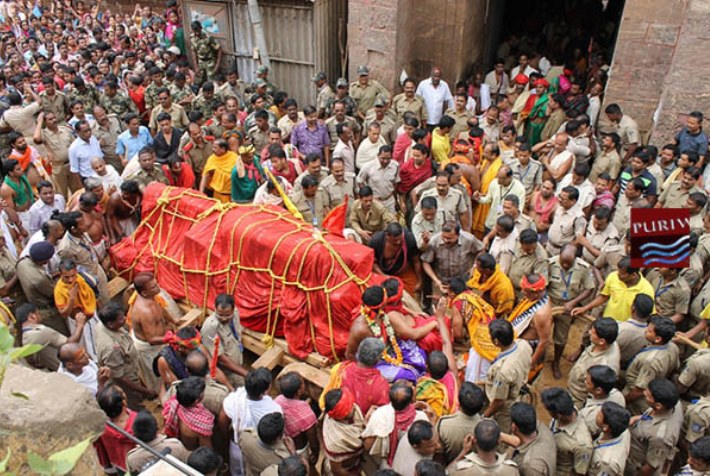
1) Koili Vaikuntha is located in between the inner and outer compound wall of the north-west corner. It is believed to be the place where Lord Krishna was cremated after being killed by Jara Savara. Hence when the Nava-kalevara ritual takes place, new images are fashioned and the old ones are buried in this place.
2) Niladri Vihar is a small museum where we can witness with the aid of painted models, as to the legendary emergence of Lord Jagannath as the presiding Deity of the temple.


